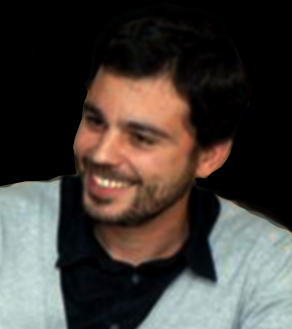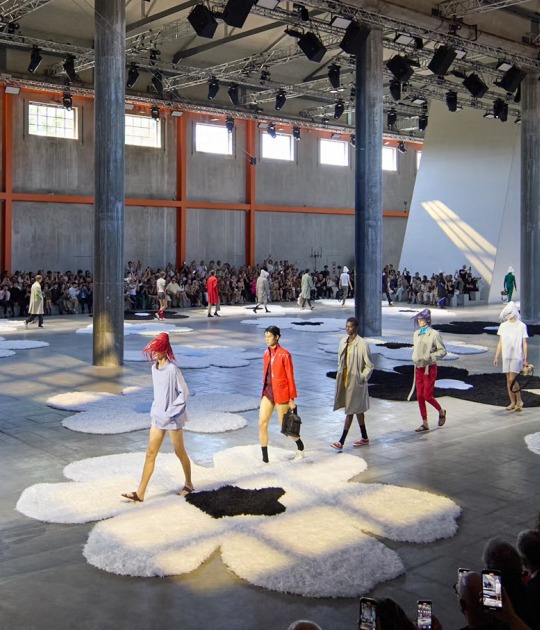This narrative not only offers visitors a presentation of Moneo’s own work but also reflects on an important part of the history of recent architecture through his gaze.
Ranging from organic and structuralist tendencies (1950-1960) to Italian discourses on the city (1960-1970), the theoretical focus of East Coast American architects (1970-1980) and the creation of the global star system in the 1990s, the exhibition’s six biographical sections show how Moneo has resisted, reflected on and assimilated these different approaches of his time to construct his own cultural reflection.
Description by Francisco González de Canales
The exhibition presents a series of important proje cts that span Rafael Moneo’s entire career and focus on issues such as what an architect’s work can offer the society of his/her day and what type of knowledge is involved. The selection of materials places particular emphasis on the importance of drawing as a tool to develop his work and a means to define his thinking. The drawings on display are accompanied by architectural models and photographs that help to illustrate the chosen works.
THE FORMATIVE YEARS.- The School of Madrid (to 1968) As a young architect, Rafael Moneo employed the organic approach characteristic of the School of Madrid, a type of functionalist architecture that looked for new expressive forms. This trend is evident in his competition proposal for the Madrid Opera House (1964), the Diestre Transformers Factory (1964-1967), the Gómez-Acebo residence (1966-1968) and the Escuelas in Tudela (1966- 1971). Particularly notable from this period is the project for the redesign of the Plaza del Obradoiro (1962) in which the delicate articulation of the elements in relation to the setting reveal Moneo’s precocious sensitivity to the urban context.
INDIVIDUAL EXPRESSION.- The early mature period (to 1976) In Moneo’s project that earned him the chair of Compositional Elements at the School of Architecture in Barcelona (1970), he located history at the centre of his approach to architecture, considering it a body of knowledge that provides architects with a series of solutions already tried out by others. This new manner of working also implied a questioning of the formal coherence of the School of Madrid and a rethinking of composition as a tool for articulating an architecture constructed from different elements. In his projects for Bankinter (1972-1976) and Logroño Town Hall (1973- 1981) the compositional freedom of each of the parts of the building allows for the inclusion of fragments of already designed buildings alongside the requirements of the specific project and the particular characteristics of the context, all without diminishing the integrity of the whole as another element within the fabric of the city.
THE INTERNATIONAL SCENE.- Between Madrid and New York (to 1984) In 1976 Moneo accepted an invitation to teach at the Cooper Union and a year later at Princeton. In late 1970 architectural debate on the American East Coast was defined by its emphasis on theory and graphic experimentation, with built work considered of lesser interest. While Moneo always rejected the separation of theory from construction, these early contacts and his access to a broader debate allowed him to shed some of the prejudices of the less open community from which he originated. Dating from this period is his project for the extension of the Banco de España in Madrid (1978-1980), for which he opted to retain and continue the academicist idiom of the pre-existing building, and the Museo Nacional de Arte Romano in Mérida (1980-1986), where Moneo’s style reaches its highest degree of formal complexity.
THE AMERICAN EXPERIENCE.- Harvard (to 1990) In 1985 Rafael Moneo was appointed director of the department of architecture at Harvard and moved to live in Cambridge, Massachusetts, for five years. This experience not only implied a renewed awareness of the necessary relationship between architectural thought and construction, inherited from his training within the context of the School of Madrid, but also a new way of seeing the city and its scale. From the mid-1980s onwards his buildings liberated themselves from the dictates of urban morphology and opted for more robust scales, evident in his designs for Atocha (1984-1992) and L’Illa Diagonal in Barcelona (1987-1994). As a result, they became geographical features, such as the Kursaal in San Sebastián (1990-1999) or even negations of the surrounding urban context, such as the Fundación Joan y Pilar Miró in Palma de Mallorca (1987-1992) and l’Auditori in Barcelona (1987-1999).
A GLOBAL PROFESSIONAL PRACTICE.- Return to Madrid and international recognition (to 1999) Due to the requirements of his commissions in Spain, in 1990 Moneo terminated his period at Harvard. These years marked the start of his international recognition and he was the subject of numerous awards and honours, including the Pritzker Prize in 1996. However, the more he moved within this global context, the more his discourse shifted towards the importance of the specific place. For Moneo, the location does not dictate a direct response towards the building but has to be interpreted, reciprocally constructed or on occasions even confronted. Projects such as the Museum of Modern Art and Architecture in Stockholm (1991-1998), the Audrey Jones Beck Building of the Museum of Fine Ar ts, Houston (1992-2000), the Cathedral of Our Lady of the Angels in Los Angeles (1996-2002), and the extension to the Museo del Prado (1998-2007) are profoundly imbued with that spirit, which emerg es from the particular characteristics of the place.
THE STUDIO AT THE TURN OF THE CENTURY.- A reflexive, professional practice (ongoing) The 21st century began with further recognition of Rafael Moneo’s career, including the award of the RIBA gold medal (2003) and the Prince of Asturias Prize for the Arts (2012). During this period the architect was responsible for buildings such as the LISE for Harvard University (2000-2007) and the laboratory building at Columbia University (2005-2010), in which he aimed to show how the contradictions between a commission and the reality of its construction are not an impediment to the project but rather provide the principal opportunities for the development of the architecture.
FROM PALACE TO MUSEUM. THE STORY OF A BUILDING.- This small exhibition, displayed in the Balcony Gallery on the Museum’s first floor, looks at the history of the Palacio de Villahermosa through prints, drawings, plans and photographs dating from the mid-18th century to the building’s remodelling in 1992 to house the Museo Thyssen- Bornemisza. The origins of the building date back to the mid-18 th century when Diego de Silva, Count of Galve, acquired the town palace on the corner of the Carrera de San Jerónimo and the Paseo del Prado. In 1746 the Duchess of Atri purchased the adjoining land and building and commissioned the Italian architects working for the court, led by Vigilio Rabaglio, to design a two-storey Rococo palace. After the acquisition of the building in the late 18th century by the Duke and Duchess of Villahermosa, Juan Pablo Azlor-Aragón and María Manuela Pignatelli, the palace underwent various enlargemen ts and alterations, acquiring a third floor and the restrained Neo-classical appearance that it still r etains today. The Palacio de Villahermosa remained in the possession of the dukes of Villahermosa during the 19th and much of the 20th centuries. However, María Manuela’s son, José Antonio, 13th Duke of Villahermosa, soon found himself obliged to rent ou t some of its principal rooms. This was the case, for example, in 1844 when Franz Liszt gave two conc erts in what was at that point the Liceo Literario y Artístico de Madrid, which was housed in the palace.
Divided in the end between the various heirs, from 1956 the Palacio de Villahermosa housed a branch of the Banco Transatlántico on its ground floor. In 1972 the building was acquired by the López- Quesada Bank which commissioned Fernando Moreno Bar berá to design its head office to be located in the building, thus demolishing much of the interior. As the exhibition reveals, this was followed by Rafael Moneo’s project to transform the building into a museum to house the Thyssen-Bornemisza collection, respecting its origins as a city palace.









































